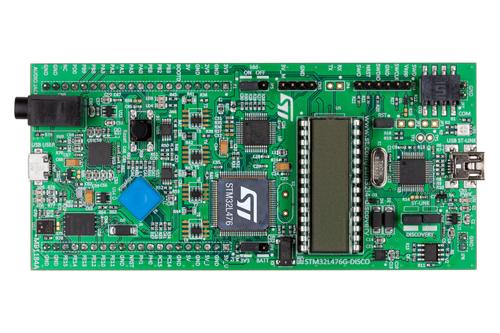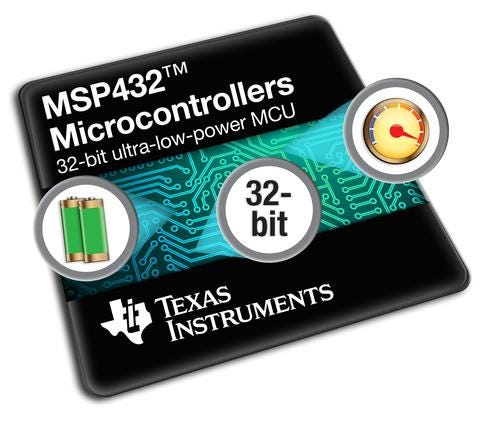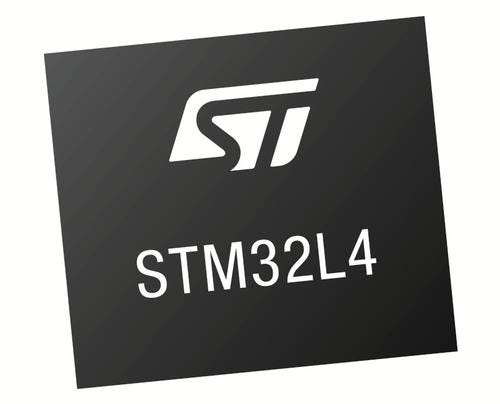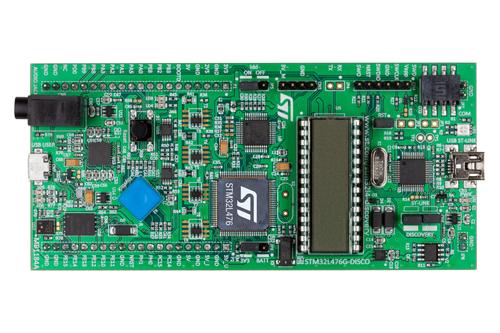MCUs Embrace New Demand for Ultra-Low Power Innovation
April 6, 2015

After years of steadily cutting the current consumption of microcontrollers (MCUs), semiconductor makers are now setting their sights on a new goal - putting more pop into their ultra-low-power performance.
Texas Instruments Inc. (TI) and STMicroelectronics recently rolled out MCUs featuring "best-in-the-industry" efficiency. Equally important, the new breed of MCUs offers searing performance based on ARM Cortex cores. ST's ultra-low power STM32L4 family, for example, now features two MCUs with 80-MHz ARM Cortex-M4 cores, digital signal processing (DSP) and a floating point unit. TI's MSP432 features a 32-bit, 48-MHz ARM Cortex M4F. The giant electronics manufacturer calls it "the world's lowest-power Cortex-M MCU. Period."

The point of this sudden interest in highfalutin performance is that the market itself is changing. "If you go back a few years, you didn't have as many portable applications," said Tony Massimini, chief of technology for industry analyst Semico Research. "Now, though, more and more attention is being focused on power, not only for portable applications, but for non-portable applications, as a way of keeping system cost down."
Indeed, applications are changing. Part of the impetus for the change is the ever-popular Internet of Things (IoT) - more sensors, more data, more need for processing power. But a host of new applications in automotive, medical, and industrial are changing the landscape as well. Autos, for example, typically employ tire pressure monitoring systems that produce lots of data - pressure, temperature, acceleration, and wheel speed readings. Health and medical applications are also changing: Heart rate monitors use optical sensors. Wearable electrocardiograms examine analog signals and then determine if the pitter-patter of a person's heart is a genuine arrhythmia or just one-too-many cups of coffee. The emergence of such applications makes it necessary to offer more processing pop, even in ultra-low power MCUs.
MORE FROM DESIGN NEWS: TI Boosts Performance of Ultra-Low Power MCUs
That wasn't the case a decade ago, experts say. Back then, typical low-power applications, such as an MCU in a smoke detector or a temperature monitor, had essentially two speeds - fast and asleep. "The microcontroller in the smoke detector over your head wakes up only a few times a minute," said Warren Miller, president of the consulting firm, Wavefront Marketing. "The rest of the time, it's asleep. But as sensors add up in your home or your car, it all comes back to the ability to encrypt, decrypt, and handle all the data."
TI's MSP432 family serves as a textbook example of how the emphasis is shifting toward the performance side of the efficiency curve. An extension of the existing 16-bit MSP430 platform, the MSP432 is the company's first ultra-lower device to graduate to a 32-bit ARM-based architecture. The new platform offers more performance - up from 25 MHz to 48 MHz - while consuming a scant 95 µA/MHz in active power and just 850 nA in standby mode.
TI said its new devices will serve well in wearable applications that have no room for big, klunky batteries. Pedometers, for example, may now be endowed with sufficient processing capability to more easily handle optical heart rate monitoring and GPS tracking. "We're hearing from customers who say they are able to do things that they couldn't do before," said Mione Plant, product marketing engineer for TI. "In the past, maybe they could only do their pedometer application and calorie counting. Now, they can do optical heart monitoring and GPS tracking, too."
Some of those changes have emerged in just the past year or two, engineers say. "Up until recently, fitness monitors used three-axis accelerometers," said Alec Bath, staff applications engineer for STMicroelectronics. "Now they're moving toward nine degrees of freedom, with accelerometers, magnetometers, and gyros. That's why you need the high performance." STMicro says that the need for such performance is stretching beyond consumer applications, into industrial and metering applications, as well.
MORE FROM DESIGN NEWS: How Low Can You Go? Getting the Most out of Low Power MCUs
The ability for an MCU to handle such applications, of course, goes beyond the processor itself. ST's STM32L476 and STM32L486 devices, for example, offer memory accelerators that enable "zero-wait" execution from flash. As a result, the devices are said to achieve speeds of 100 DMIPs (Dhrystone MIPS) at just 100 µA/MHz active power consumption.

Low power is rapidly becoming desirable in non-portable applications, as well. In set-top boxes, for example, engineers find a lower power MCU allows them to reduce heat dissipation, in some cases eliminating the need for a cooling fan. "Not everything has to be a high-end smartphone or a laptop," Massimini told us. "For a lot of microcontroller applications, you don't need a gigahertz [processor]."
Still, the move toward low power and high performance can present a challenge for designers. Designers need to write software to control the ever-expanding number of product options. Moreover, test and debug in such applications becomes more complicated.

Semiconductor makers, however, are increasingly forging relationships with sensor suppliers to help ease that process. And they are providing new tools to help with code development. TI, for example, offers a low-cost LaunchPad rapid prototyping kit with on-board emulation for users of the MSP432 MCU. And STMicro's STM32L Discovery board is part of a development ecosystem that includes evaluation boards and software tools.
The bottom line is that device makers recognize the need in the market, which is why they continue to evolve their MCUs in terms of both speed and power. "If the past teaches us anything, it's that there will always be ways to improve your application," said Miller of Wavefront Marketing. "The future is a continual quest for improvement. We'll never get to the point where we say, 'We're all done now.'"
Senior technical editor Chuck Murray has been writing about technology for 31 years. He joined Design News in 1987, and has covered electronics, automation, fluid power, and autos.
Design engineers, New England's premier design and manufacturing event, Design & Manufacturing New England, will take place in Boston, May 6-7, 2015. A Design News event, Design & Manufacturing New England is your chance to meet qualified suppliers, get hands-on with the latest technologies, be informed, and expand your network. Learn more here.
About the Author(s)
You May Also Like

.jpg?width=300&auto=webp&quality=80&disable=upscale)

